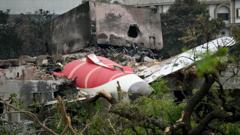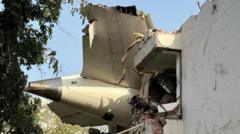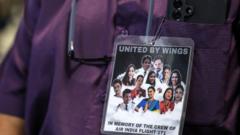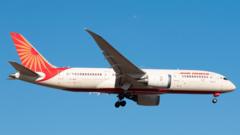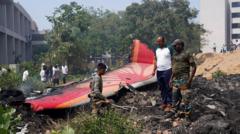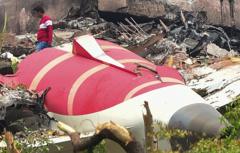The article explores the history of the 787 Dreamliner, allegations from whistleblowers regarding its safety standards, and the implications of the recent Air India crash.
**Boeing's Dreamliner Faces Scrutiny Amid Recent Tragedy**

**Boeing's Dreamliner Faces Scrutiny Amid Recent Tragedy**
Despite its once-prominent safety reputation, Boeing's 787 Dreamliner is under severe investigation following a tragic crash.
Boeing's 787 Dreamliner, once heralded as one of the safest aircraft in the skies, is now the focus of intense scrutiny following a catastrophic crash involving Air India flight 171 that resulted in the loss of at least 270 lives. This incident has raised serious concerns regarding the safety and reliability of the Dreamliner, particularly as the aircraft was previously celebrated for its impressive safety record over nearly 15 years of operation.
While investigations are underway to determine why the flight crashed just 30 seconds after takeoff, the aircraft's history is marred by quality control issues. Whistleblowers from within Boeing have expressed alarm over alleged production shortcuts, claiming that flawed parts may have been used in the assembly of the Dreamliner. Boeing has consistently denied these allegations but faces mounting skepticism as the company attempts to calm fears surrounding the safety of its fleet.
Originally conceived in the early 2000s, the 787 Dreamliner was a response to rising fuel prices and a shift in travel dynamics post-9/11 that favored efficiency over speed. Boeing aimed to revolutionize air travel with a more fuel-efficient aircraft that utilized lightweight materials and advanced technology. A successful design, the 787 had previously flown over a billion passengers without major accidents, leading many to view it as a modern marvel. However, its introduction was beset with challenges, beginning with battery fires and production issues that prompted a temporary grounding of the fleet in 2013.
More recently, significant allegations have emerged from various whistleblowers, including former employees who have claimed unsafe practices within the production lines. Reports have surfaced regarding the use of substandard parts to hasten production, with warnings that this could lead to serious safety risks. These claims echo preceding concerns from former quality managers, such as John Barnett and Cynthia Kitchens, who both cited systemic problems that may compromise aircraft safety.
Recently, another whistleblower warned lawmakers that lax safety protocols at Boeing could lead to "catastrophic failures" in the 787 fleet. In light of these repeated concerns, aviation safety advocates are calling for a thorough and prompt investigation to identify any underlying issues that could put lives at risk.
Despite the heightened scrutiny, some industry experts maintain confidence in the Dreamliner’s overall safety hardware. They argue that the aircraft's extensive operational history without significant crashes suggests that systemic issues have largely been addressed. However, organizations monitoring aviation incidents caution that the recent crash could be indicative of unresolved safety concerns requiring attention.
As the investigation into the Air India tragedy unfolds, analysts emphasize the importance of maintaining rigorous safety checks to prevent future incidents, underscoring the need for transparency and accountability in aerospace manufacturing. The latest developments serve as a reminder of the complexities inherent in the aviation industry, where efficient production must not come at the cost of passenger safety.


